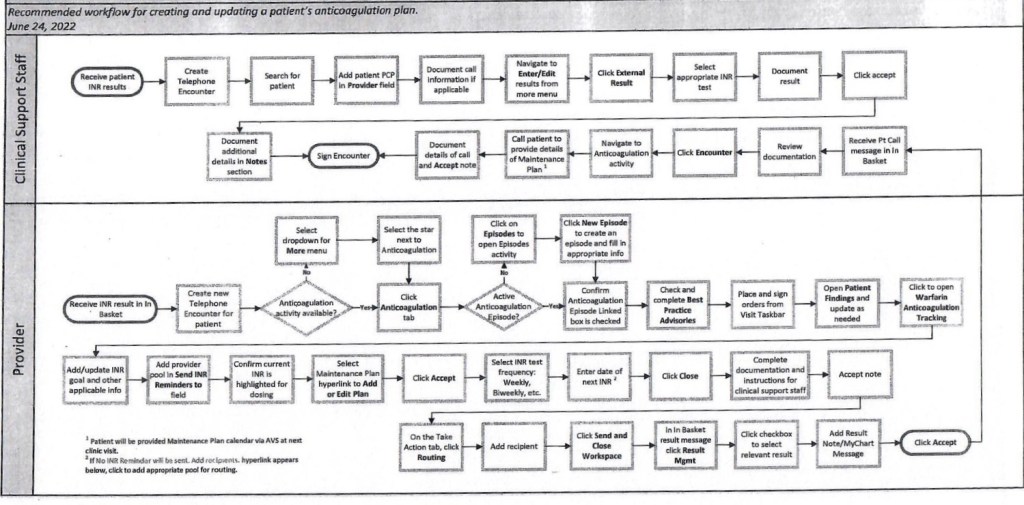Warfarin dosing requires viewing past values and past dosing. If every time a certain dose change results in an unwanted result, we should probably avoid making the same over- or under-correction again and again.
For many years I have used a paper(!) flowsheet that takes seconds to utilize and gives a practical overview. These sheets sit in a three ring binder. My nurse can flip through this binder and spot who is delinquent with their testing. The actual lab values are of course in the computer, but so far the three EMRs I have used can’t give me the overview I need within anything even close to a reasonable timeframe.
These two pictures say it all. My patient in the paper flowsheet has a home INR that requires weekly testing for the insurance to cover it. The “workflow” (how I dislike that word) on the bottom is from Epic.
I thought computers had the capability of speeding things up, but in my corner of the world that is mostly a pipe dream.













I keep my Pap, HPV, and Colpo results in a three ring paper notebook as well. Next week the third version of our electronic health record begins. It’s called Genesis. I have not heard anything good about it.
That paper sheet horrifies me. From what I can make out of the EMR screen, that is not an equivalent to the paper record, it looks more like the structure of an anticoag management program. This is not comparing like with like at all. How about a simple spreadsheet to store the same information as the paper file? Searchable, accessible to multiple clinic workers without spending time running around trying to find the paper file or the three rign binder, legible (sorry…), less chance of someone other than the writer misreading a number.
The diagram is the provider and nurse work flow for each and every test.